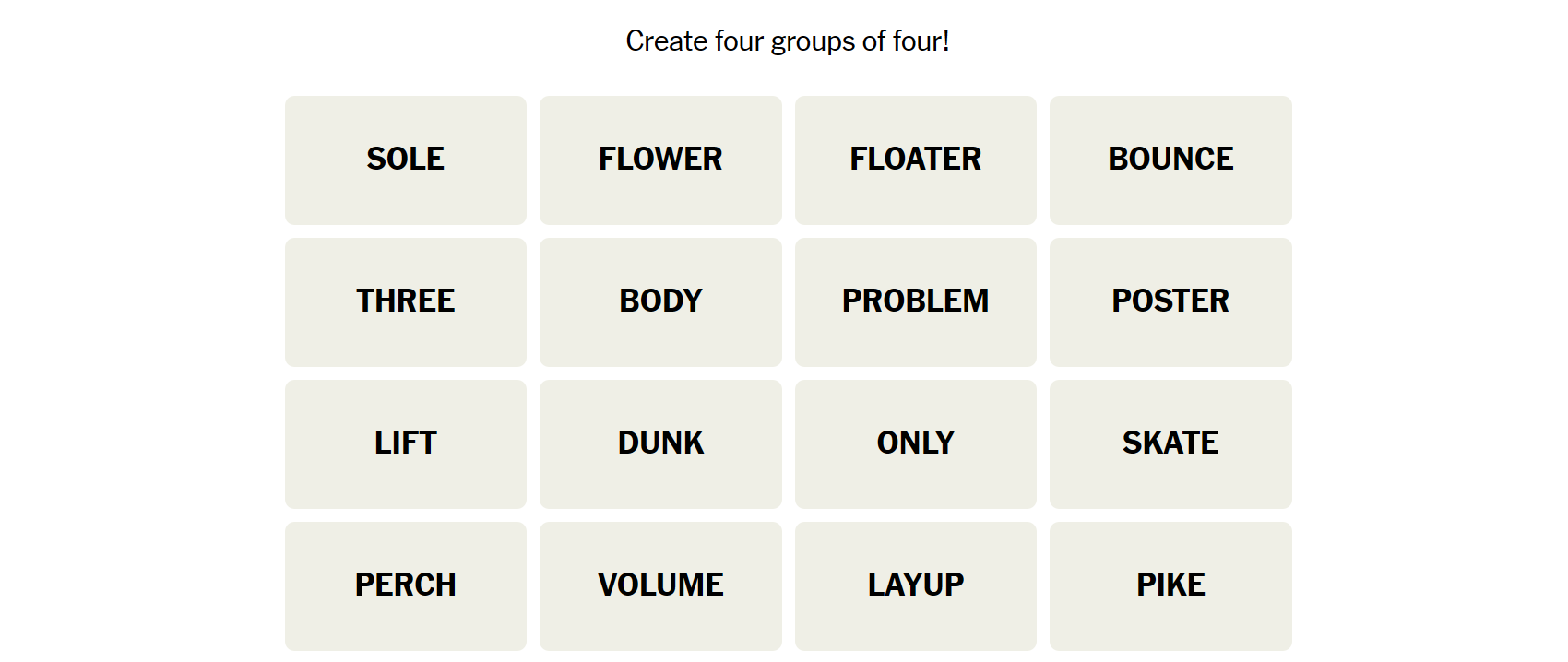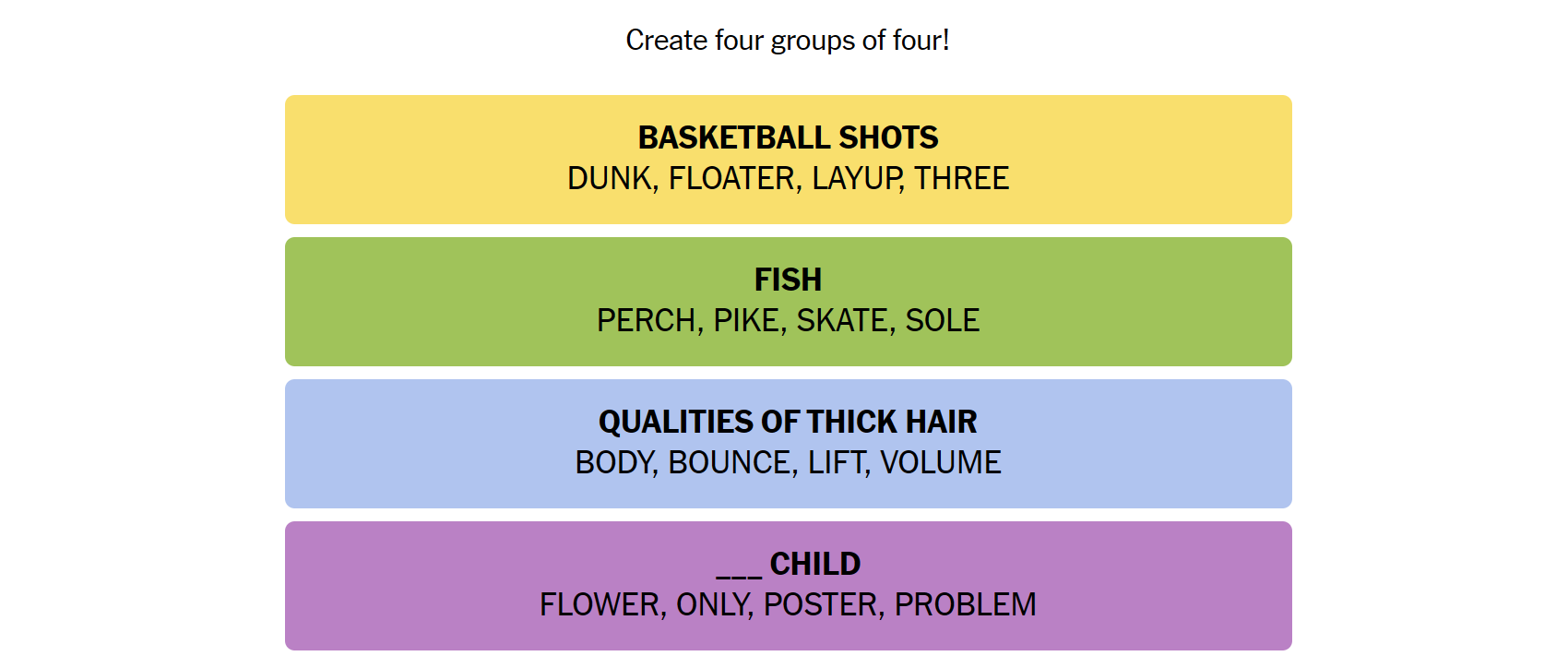
June 15Th Puzzles & Solutions: Insights From the New York Times #370 Edition

June 15Th Puzzles & Solutions: Insights From the New York Times #370 Edition
Quick Links
- What Is Connections?
- Hints for Today’s Connections Groups
- Today’s NYT Connections Answers
- How Did We Solve This Connections Game?
- How Do You Guess Connections Groups?
Connections is a game from the New York Times that challenges you to find the association between words. It sounds easy, but it isn’t—Connections categories can be almost anything, and they’re usually quite specific. If you need a hand getting the answers, we’ve got you covered.
What Is Connections?
Connections is a game from the New York Times. The objective is simple: sort 16 words into groups of 4. Each group of words will be connected by some common idea or theme. That common element could be anything. We have seen everything from games that rely on the number of letters in the words to categories that require you to spot an extra letter at the end of the word. Sometimes they’re references to economics, other times they reference fairy tales. There is no telling what sort of association there will be between words.
Once you’re confident you understand the connection, select 4 words, then hit “Submit.” You have only four attempts in total, so don’t be too guess-happy.
Hints for Today’s Connections Groups
Here are a few hints for the 370th Connections game to get you started:
- Yellow: Ways to score in a game.
- Green: Things that swim.
- Blue: Words you’d use talking to a barber or stylist.
- Purple: There is a missing word at the end.

If you still need help, the actual group names are:
- Yellow: Basketball Shots
- Green: Fish
- Blue: Qualities of Thick Hair
- Purple: _____ Child
Today’s NYT Connections Answers

Basketball Shots (Yellow):
Dunk, Floater, Layup, Three
Fish (Green):
Perch, Pike, Skate, Sole
Qualities of Thick Hair (Blue):
Body, Bounce, Lift, Volume
___ Child (Purple):
Flower, Only, Poster, Problem
How Did We Solve This Connections Game?
June 15th was an average game.
The first word I looked at was layup—a word I’ve only ever heard in the context of basketball. With that in mind, I just went for dunk, three, and floater, since they’re all kinds of “Basketball Shots,” which was just Yellow.
Next, I looked at pike. Pike can refer to a mountain, a weapon similar to a spear, or a type of fish. I don’t see any other geography-related terms, nor do I see anything related to medieval weaponry, so I started looking for other fish. A perch is a small(ish) fresh water fish, skates are a type of fish that resembles a stingray (though skates lay eggs and rays give birth), and a sole is a variety of flatfish. Green, as you might expect, was just “Fish.”
Body, bounce, lift, and volume instantly clicked for me (miraculously) as “Qualities of Thick Hair,” which was the Blue group.
That left flower, only, poster, and problem. Saying them out loud was helpful again, and I realized that the missing word was child: Flower Child, Only Child, Poster Child, and Problem Child. Purple was just “___ Child.”
How Do You Guess Connections Groups?
There is no quick, reliable way to approach Connections like there is with Wordle, since Connections isn’t algorithmic. However, there are a few things to keep in mind that can help.
- Look for similar parts of speech. Are some words verbs and others nouns? Are some adjectives? Try mentally grouping them based on those categories and see if any other patterns jump out at you.
- Are the words synonyms? Sometimes categories will just be synonyms for a phrase, or very close to synonyms. Don’t rely too closely on this, though. Occasionally, Connections will deliberately throw in words that are sometimes synonyms to mislead you.
- Try saying the words. Sometimes, saying the words helps. One puzzle we saw included the words go, rate, faster, clip, pace, speed, move, commute, and hurry—all of which are obviously related to the idea of motion. However, when you say them, it becomes a little more obvious that only four (go, move, hurry, faster) are things you’d actually say to prompt someone to get moving.
- Expect the red herring . Connections usually has words that could be plausibly, yet incorrectly, grouped together. Take the words Bud, Corona, and Light, as an example. You might instinctively see those three words together and assume they’re lumped together in a category related to beer—but they weren’t.
- Look for distinct words. If a word on your board doesn’t have multiple meanings or can really only be used in one context, try using that word as the basis for a category.
- Shuffle the board. Sometimes, moving words around will help you look at them in new ways.
If you didn’t solve this one, don’t feel too bad—there’s always tomorrow! And those words may align with a topic you’re interested in, giving you a leg up on the competition.
Also read:
- [New] 2024 Approved Revisit Facebook's Top Watches A Step-by-Step
- [New] Boost Your Content Access Free Vocal SFX, In 2024
- [Updated] Webinar Mastery Record Without Monetary Burden for 2024
- 2024 Approved Best 7 Streaming Tools for Mac Users
- 安心です!無料ウェブサイトでのRMVB/FLV動画変換 - Movaviツール
- 完全無料で簡単なASF・SWFファイルのオンライン変換 - Movavi
- Cambiar Archivo SWF en Formato MOV/QuickTime: Herramienta Convertidora en Línea Sin Coste
- Cost-Effective TopMate C302 Chill Pad Scrutiny: Stellar Performance on a Shoestring
- Free Online Converter: Convert Files From WMA/EM4R to MP3 with Movavi
- How to Transfer Photos from Oppo F25 Pro 5G to Laptop Without USB | Dr.fone
- In 2024, How to Transfer Data After Switching From Vivo S18 to Latest Samsung | Dr.fone
- In 2024, Mastering School Without Edgenuity Videos
- RMVB Files to MOV Conversion: Quick & Free Online Service
- Strategies Pour Distinguer Et Améliorer La Visibilité De Vos Clips Vidéos en 2024
- The Ultimate List of 6 Instagram Reel Enhancers
- Transformez Un Image Animée GIF en Vidéo FLV Sans Dépenser De L'Argent - Avec Movavi
- Unveiling of Amazon's Next-Gen App Studio and Cutting-Edge AI Protection Measures at the AWS Summit, as Covered by ZDNet
- 무료 MPG/MPEG-1 각성 프라이머를 모바일로 FLV로 쉽게 변환하는 - Movavi
- 무료 원조: 모바일으로도 쉽게 사용할 수 있는 M4A 프리페이셜 MP3 변환기 - Movavi
- Title: June 15Th Puzzles & Solutions: Insights From the New York Times #370 Edition
- Author: Christopher
- Created at : 2024-12-27 00:31:09
- Updated at : 2025-01-03 01:41:53
- Link: https://some-approaches.techidaily.com/june-15th-puzzles-and-solutions-insights-from-the-new-york-times-370-edition/
- License: This work is licensed under CC BY-NC-SA 4.0.